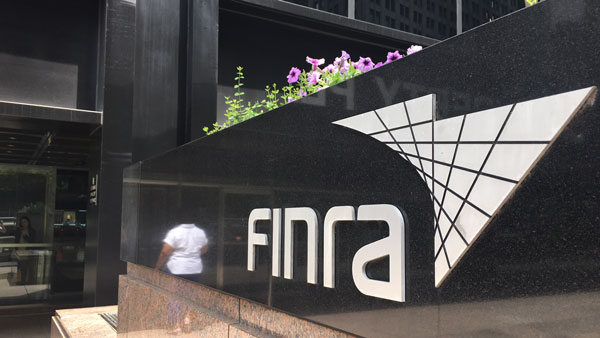
 Outside FINRA offices in New York. (Photo: Ronald Pechtimaldjian)
Outside FINRA offices in New York. (Photo: Ronald Pechtimaldjian)
How does the Financial Industry Regulatory Authority define a high-risk broker?
"There's no hard, fast definition of a high-risk broker," but FINRA does utilize criteria to identify them, said Mike Rufino, head of FINRA member regulation, during an "Ask FINRA" panel discussion Wednesday at FINRA's annual conference in Washington.
FINRA employs a "quantitative and qualitative assessment," with the broker-dealer self-regulator quantitatively looking at a "host of criteria that seems to be somewhat more predictive," with help from FINRA's advanced analytics team, Rufino said.
FINRA looks at an individual rep's:
- Settlements
- Complaints
- Disclosures
- Employment history/termination history
- Exam attempts
- Geography — where the rep is located
- Individuals who associate with high-risk brokers
"Then we use that quantitative assessment that we qualitatively assess and look at the number of complaints a broker has, the nature of those complaints," Rufino said.
Next, FINRA also looks at individuals on a quantitative basis. "If you have a number of disclosures — the mere fact that you have a number of recent disclosures could elevate someone to being of high risk," Rufino continued.



